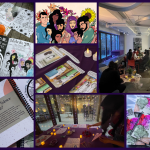In the current challenging economy….that seems to be the way we start and end practically every conversation these days, doesn’t it?
But this is in fact our reality today – we really can’t get away from it. That said, the good news is that the only thing that is constant is change. So we will emerge from this economic crisis, as we have emerged from every one that has come before.
In the meantime, the key questions for most nonprofits are:
- How do we weather the current storm?
- How do we position ourselves to be able to continue to do the important work we do once the economy turns around?
The first is a question of survival; the second, a question of sustainability.
So why make a distinction? Let’s take a minute to contemplate the definitions.
SURVIVAL: the act or process of continuing to exist in the present despite being from an earlier time; continuing longer than, or beyond the existence of, another person, thing, or event.
SUSTAINABILITY: the ability of a program or organization to continue and endure indefinitely.
Certainly when given the choice, all of us would prefer to be sustainable rather than to just survive.
Yet, I understand that in some circumstances, whether talking about an organization or an individual, survival is the most immediate and pressing priority. But how often is survival a necessary position because there hasn’t been an (effective) sustainability plan in place? Is survival a necessary first step to reaching sustainability, or does sustainability occur on a totally different track?
What do you think?
The question we have been working to address at The Women’s Foundation is: How does one plan for sustainability?
Financial security is often the most common focus of sustainability planning and activities for many organizations – particularly in a time of economic difficulty. But it is just one of several components of organizational sustainability. The reality is that financial sustainability is only relevant and truly sustainable if the vision, impact and leadership of the organization are all sound as well.
On March 11th, The Women’s Foundation hosted a workshop facilitated by Heather Peeler, the Managing Director with Community Wealth Ventures, who has more than 10 years of experience in the nonprofit sector and management consulting.
Heather’s presentation took the seven key hallmarks of sustainability we identified in the The Women’s Foundation’s most recent Open Door Capacity Fund RFP, presented each hallmark in greater depth, and stimulated a great discussion among workshop participants about how these hallmarks are relevant to their organizational sustainability.
Moreover, Heather shared sustainability planning resources and provided helpful tips on selecting and working with consultants.
The information was so well received by workshop attendees, we want to make it available to all of our community partners though this blog. We encourage you to take a moment to do the organizational self-assessment that is included in the materials. You might surprise yourself.
Organizational Sustainability Self Assessment
Sustainability Workshop Presentation Slides
But regardless of which resource you use, have the discussions about what strategies your organization is using to weather the storm. Is your strategy focused on survival or sustainability?
And why.
Remember, change is constant. So , where will you be when saying “in the current economy” no longer conjures up worry and anxiety, but instead visions of opportunity and possibility.
Nicole Cozier is The Women’s Foundation’s Philanthropic Education Officer.


